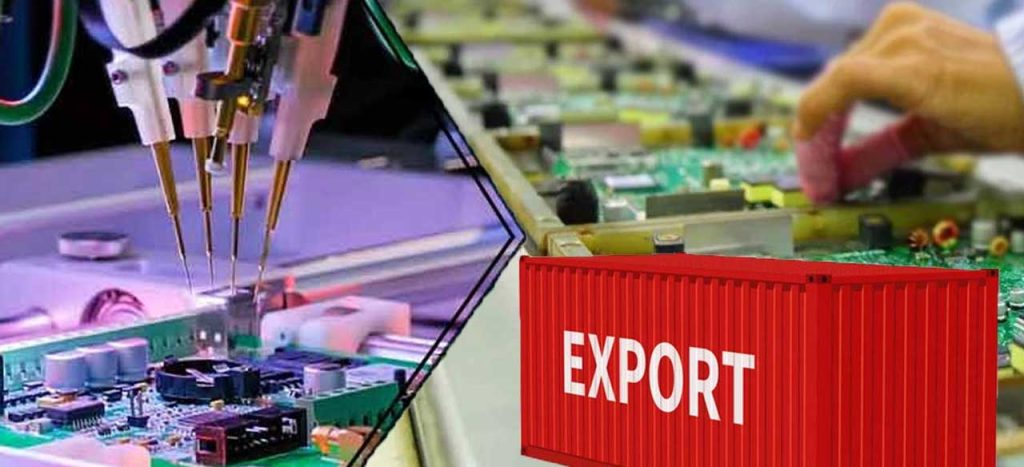
The electronic devices export market encompasses the international trade of a wide range of consumer electronics, components, and related products, including smartphones, laptops, televisions, home appliances, and more. This market is a key driver of global trade, as electronic devices are integral to modern life and technological development.
Market Overview
- The export of electronic devices includes both consumer electronics (e.g., smartphones, laptops, tablets, televisions) and industrial electronics (e.g., semiconductors, sensors, and other electronic components).
- Rapid technological advancements, increasing consumer demand, and globalization are key drivers of growth in this market.
- The market is dominated by a few major exporting countries, which act as manufacturing hubs for global electronics brands.
Key Exporting Countries
- China: The largest exporter of electronic devices in the world. It is home to many electronics manufacturers, and a significant part of global supply chains is based in China.
- South Korea: A major exporter, especially of semiconductors, smartphones, and televisions, with companies like Samsung and LG leading the charge.
- United States: Known for high-tech exports, including computer hardware and specialized electronic components. Companies like Apple play a significant role.
- Japan: A leader in exporting advanced electronics such as robotics, imaging equipment, and semiconductors.
- Germany: Known for exporting industrial electronics and high-quality engineering solutions, including automation systems.
- Taiwan: A major player in semiconductors and other electronic components, with companies like TSMC (Taiwan Semiconductor Manufacturing Company) leading globally.
Key Importing Countries
- United States: A major importer of consumer electronics, especially smartphones, computers, and home entertainment systems.
- European Union: Countries like Germany, France, and the UK are key importers of electronic devices, particularly consumer and industrial electronics.
- India: With its rapidly growing middle class and increasing digitalization, India is a key importer of smartphones, laptops, and other electronic devices.
- Southeast Asia: Countries like Indonesia, Thailand, and the Philippines are fast-growing markets for electronics due to rising disposable incomes and technological adoption.
- Latin America: Brazil and Mexico are among the largest importers of electronic goods, particularly smartphones, televisions, and home appliances.
Categories of Exported Electronic Devices
- Consumer Electronics: This includes devices like smartphones, tablets, laptops, televisions, wearable devices, and home appliances. Smartphones dominate this category, followed by laptops and tablets.
- Semiconductors and Components: Microchips, transistors, diodes, and other electronic components are vital for manufacturing a wide range of products, including computers, phones, and industrial machinery.
- Telecommunication Equipment: Includes routers, modems, base stations, and other networking equipment, which are critical in the 5G era.
- Home Appliances: This category includes refrigerators, washing machines, microwaves, and other household electronics, which are widely exported to both developed and developing markets.
- Industrial Electronics: Includes automation systems, sensors, control systems, and other industrial-grade electronics that are essential in manufacturing and other industries.
Trends in the Electronic Devices Export Market
- 5G and IoT (Internet of Things): The growth of 5G networks and the increasing integration of IoT in everyday life is driving exports of 5G-enabled devices and smart electronics (such as smart home devices, connected cars, and wearables).
- Semiconductor Shortages: The global semiconductor shortage that began in 2020 disrupted supply chains, especially in industries dependent on chips, like automotive and electronics. While the situation is improving, the semiconductor market remains a critical factor in electronics exports.
- Sustainability and E-Waste: Growing concern about electronic waste (e-waste) is influencing the market. Exporters are being pushed to adopt greener practices, such as recycling old electronics and creating energy-efficient devices.
- Emerging Markets: Countries in Africa, South Asia, and Latin America are seeing rapid growth in demand for affordable consumer electronics, driven by expanding internet access and rising disposable incomes.
- Refurbished and Second-Hand Devices: Similar to the mobile phone market, there’s an increasing demand for refurbished electronics, particularly in developing countries where consumers seek more affordable options.
Challenges in the Electronic Devices Export Market
- Supply Chain Disruptions: COVID-19 and other global crises have shown how vulnerable supply chains can be. Shortages in components, especially semiconductors, have caused delays and increased costs for exporters.
- Trade Wars and Tariffs: Geopolitical tensions, such as the U.S.-China trade war, can lead to tariffs and export restrictions, disrupting global supply chains.
- Regulatory Compliance: Electronic devices are subject to various international standards and regulations, such as safety, environmental impact, and electromagnetic compatibility (EMC). Navigating these regulations across different countries can be complex.
- Technological Obsolescence: The fast pace of innovation in the electronics industry means products quickly become outdated, which can create challenges for manufacturers in terms of managing inventory and exports.
- Counterfeit Goods: The market for counterfeit electronic devices is growing, especially in regions where enforcement is weak. These goods not only harm brand reputations but also cause economic losses to legitimate exporters.
Opportunities
- 5G Devices: The global roll-out of 5G networks is creating a surge in demand for 5G-enabled smartphones, routers, and other telecom equipment.
- Electric Vehicles (EVs): The transition to electric vehicles is creating opportunities for exporters of EV components, including batteries, sensors, and charging infrastructure.
- Smart Home Devices: Smart home devices such as AI-driven assistants, smart security systems, and energy-efficient appliances are gaining popularity, especially in developed markets.
- Energy-Efficient and Eco-Friendly Electronics: There is growing demand for energy-efficient electronics, driven by both environmental awareness and regulations. This includes solar-powered devices and products with low energy consumption.
Regulations and Compliance
- RoHS (Restriction of Hazardous Substances): This EU directive restricts the use of certain hazardous materials in electronic and electrical equipment, such as lead, mercury, and cadmium.
- WEEE (Waste Electrical and Electronic Equipment Directive): A European Union regulation aimed at reducing e-waste by encouraging the collection, recycling, and recovery of electrical and electronic equipment.
- EMC (Electromagnetic Compatibility): Products must comply with EMC standards to ensure they don’t emit harmful electromagnetic interference or get disrupted by it.
Future Outlook
- The electronic devices export market is expected to continue growing, driven by advances in technology (e.g., AI, IoT, 5G, robotics) and increasing demand from both developed and developing regions.
- The growth of green and sustainable electronics could also reshape the market, with more focus on energy-efficient and recyclable products.
- Globalization, coupled with rapid technological change, will keep this market dynamic, offering both opportunities and challenges for exporters.
In conclusion, the electronic devices export market is a vital and fast-evolving sector with strong demand for innovation, sustainable practices, and navigating complex global trade environments.





